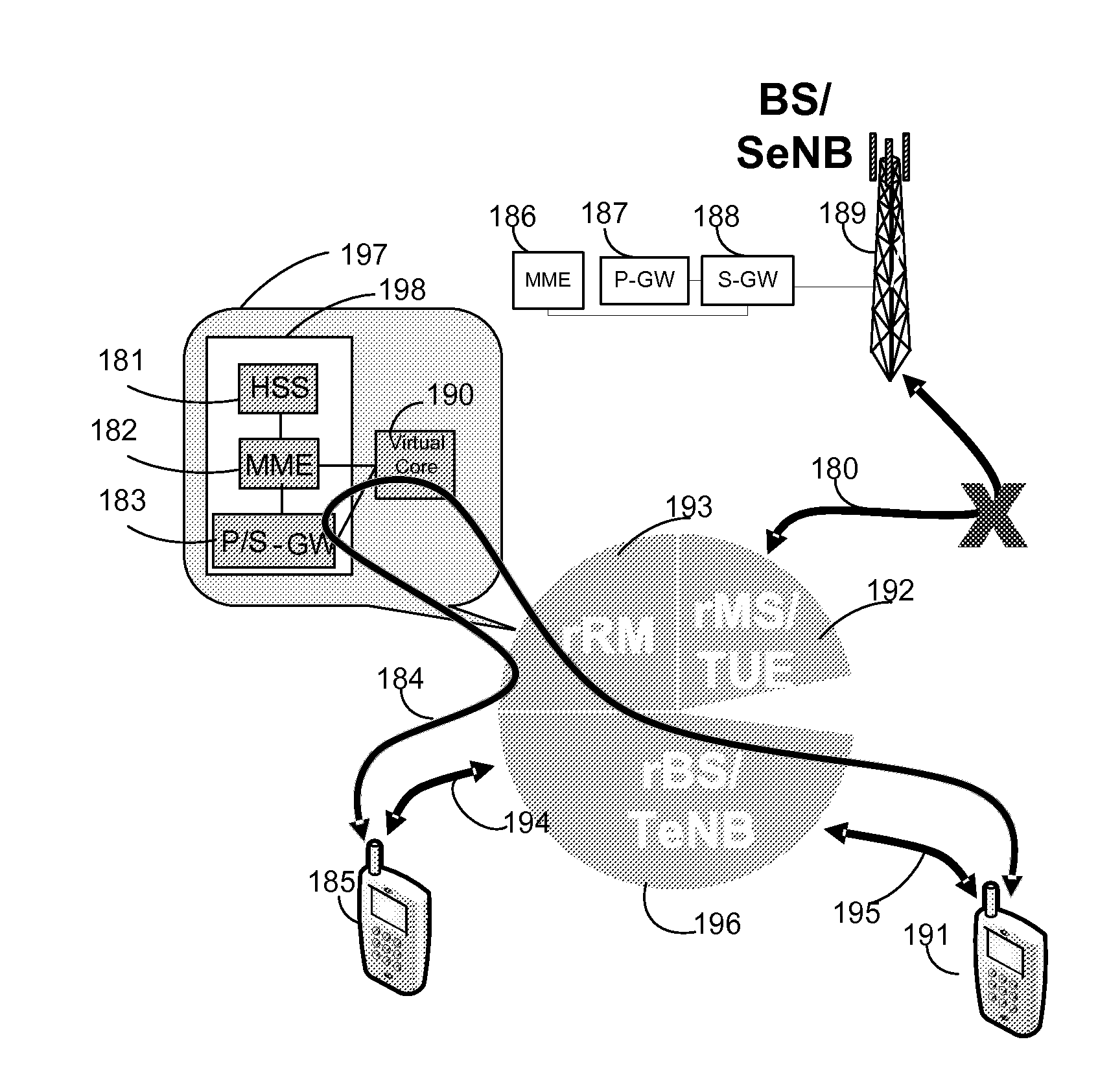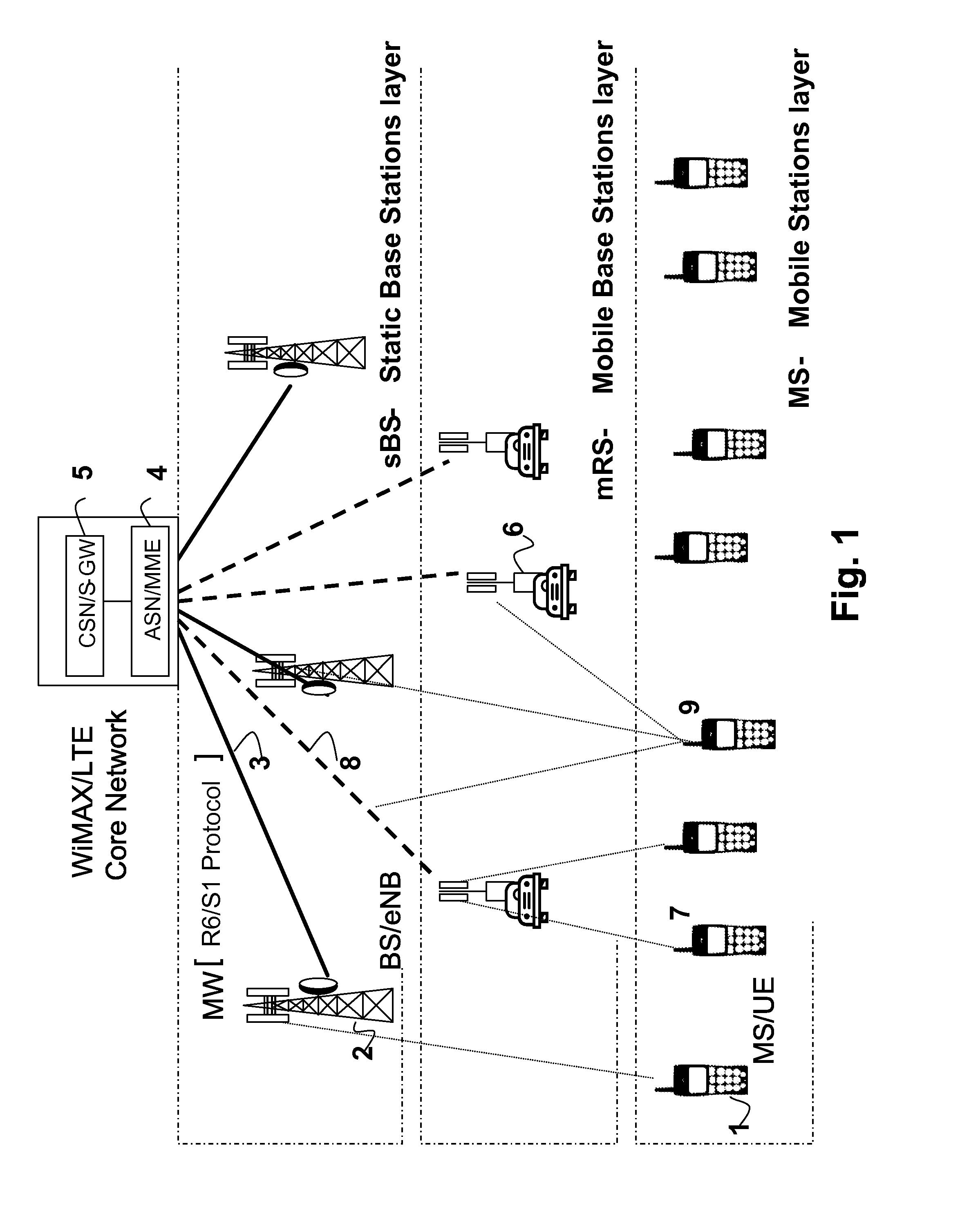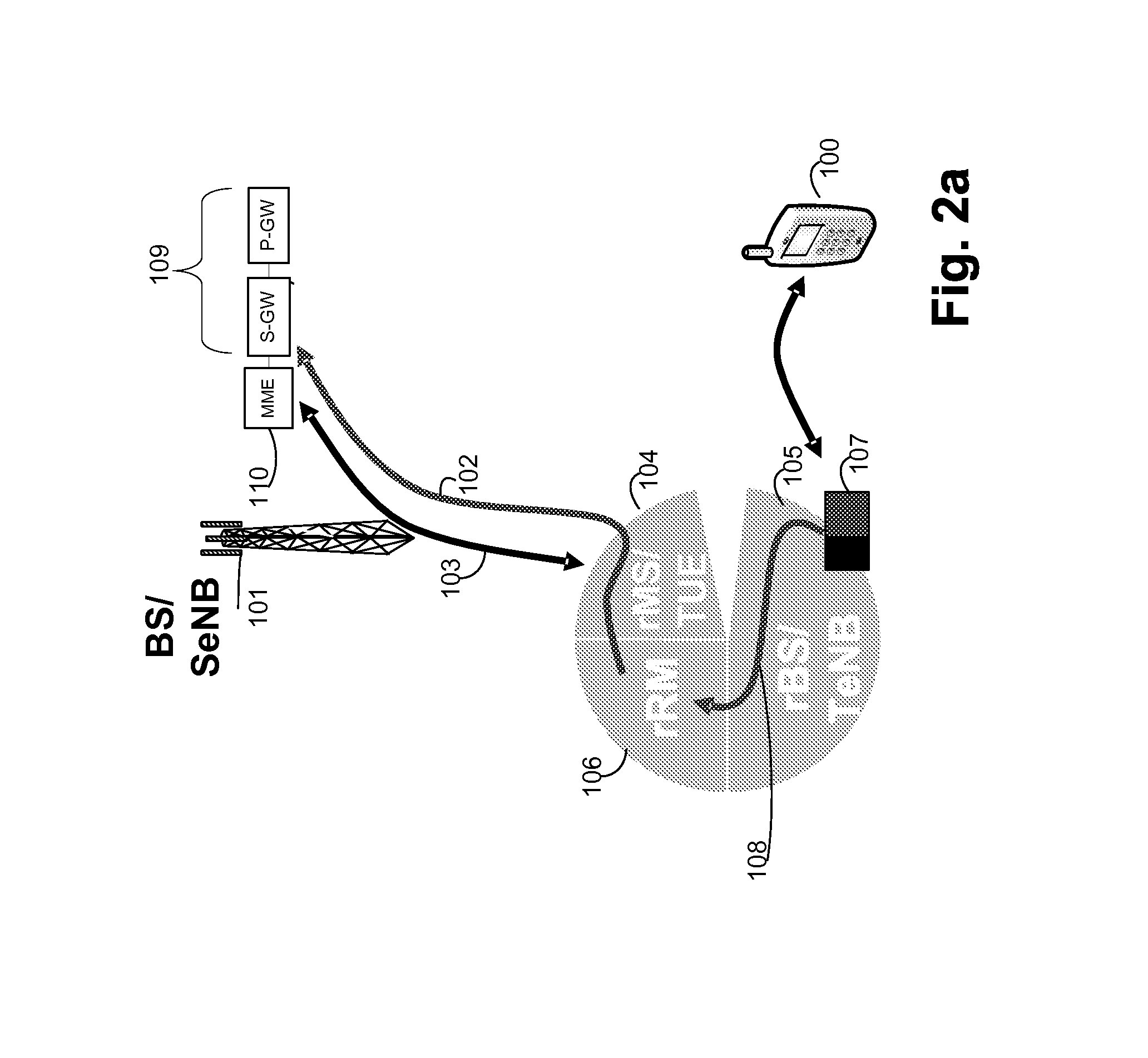Moving cellular communication system operative in an emergency mode
a mobile communication system and emergency mode technology, applied in the direction of multiplex communication, orthogonal multiplex, wireless commuication services, etc., can solve the problems of traffic flow and management difficulties of multi-layer hierarchical dynamic cellular networks, and achieve the effect of extending the coverage of base stations
- Summary
- Abstract
- Description
- Claims
- Application Information
AI Technical Summary
Benefits of technology
Problems solved by technology
Method used
Image
Examples
embodiment 1
[0180]A moving cellular communication system comprising:
[0181]a plurality of moving relays each including base station functionality, a radio manager and mobile station functionality, all co-located,
[0182]wherein each base station functionality is operative to communicate via antennae with at least one mobile station thereby to define a first radio link there between, and wherein each base station functionality has a physical connection to its co-located radio manager,
[0183]wherein each mobile station functionality communicates via antennae with a unit which has base station functionality thereby to define a second radio link,
[0184]wherein the radio manager in each individual moving relay comprises:[0185]a radio resource manager; and[0186]functionality for exchanging information with radio managers included in moving relays other than said individual moving relay,
[0187]wherein said information is used by said radio resource manager to select, for at least one individual mobile stati...
embodiment 2
[0191]A system according to embodiment 1 operative in conjunction with a cellular network including a core device, at least one static base station, and a population of mobile stations communicating via antennae with at least one of the base stations, wherein at least one topological change in said system occurs dynamically, said topological change comprises a dynamic change in at least one connection between a moving relay and at least one of a moving relay and a static base station.
embodiment 3
[0192]A system according to embodiment 2 wherein at least one radio resource manager locally stores at least some of the information it uses to make a decision regarding selection of a cellular communication service provider for an individual mobile station seeking to be served, even after said decision has been made, thereby to generate a database co-located with said radio resource manager.
PUM
 Login to View More
Login to View More Abstract
Description
Claims
Application Information
 Login to View More
Login to View More - R&D
- Intellectual Property
- Life Sciences
- Materials
- Tech Scout
- Unparalleled Data Quality
- Higher Quality Content
- 60% Fewer Hallucinations
Browse by: Latest US Patents, China's latest patents, Technical Efficacy Thesaurus, Application Domain, Technology Topic, Popular Technical Reports.
© 2025 PatSnap. All rights reserved.Legal|Privacy policy|Modern Slavery Act Transparency Statement|Sitemap|About US| Contact US: help@patsnap.com



